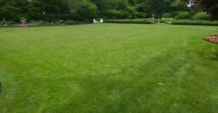Peas are one of my favorite vegetables! They are also one of the most cold-tolerant plants grown in Kansas gardens. They can be planted about as early as soil can be prepared in the spring.
• Shelling peas. Sometimes called English or garden peas, these varieties must be shelled and the seeds are eaten.
• Sugar snap peas. These peas have fleshy, edible pods and are consumed when the seeds are developed and the pods are full. They have a very sweet flavor.
• Snow peas. These edible-podded peas have thin, tender pods that are typically eaten when the seeds are still very small and immature.
Variety considerations. Many varieties are good choices in Kansas, although early maturing varieties may be more consistent, especially in the southern half of the state. Varieties that are resistant to powdery mildew may also be a good choice.
For most gardeners, the two primary considerations are vine height and pod length. Some peas have shorter, dwarf vines that will not need any staking or trellising. Others have much taller vines — as tall as 5 feet — and will need a trellis for best production.
Pod length typically has a direct impact on yield, with longer pods having more seeds. Larger podded snow and snap peas also will often yield more per plant. However, gardeners may find that they prefer the flavor and tenderness of smaller podded varieties.
When to plant. Plant seed in early to mid-March when soil is dry enough to work. Peas will germinate when soil conditions are favorable. Peas planted later in the spring may not produce before the weather gets too hot. Peas are not well adapted for fall gardens because seed usually fails to germinate well in warm soil.
Spacing. Plant seed 2 to 4 inches apart with rows 12 inches apart. Peas usually do best where 2 to 3 rows can be planted 4 to 6 inches apart to allow the weak, spindly vines to support each other.
Crop rotation. If possible in your garden space, do not plant peas in an area where peas or beans have been planted in the past 3 to 4 years.
Care. Peas prefer cool soil and need water during stressful periods. They grow best in moderate- to well-fertilized soil. A trellis may be needed to support the flimsy vines; short wire mesh or string trellis works well.
Harvesting. When the shelling pea pods are swollen so that seeds within are full sized but tender and not yet starchy, pick and shell the peas. Harvest sugar snap peas when the pods are succulent and tender, but the seeds are mostly enlarged. Harvest snow peas when the pods are crisp and tender but before the seeds begin to enlarge significantly. Tasting a pea or two is also helpful in determining if they are ready to pick. Edible-podded peas should be tender and sweet at optimum harvest.
Store peas in a refrigerator in a plastic bag for up to a week. Edible-podded types should be picked and used immediately after harvest as they tend to dry out readily. Peas are easily frozen for later use.





